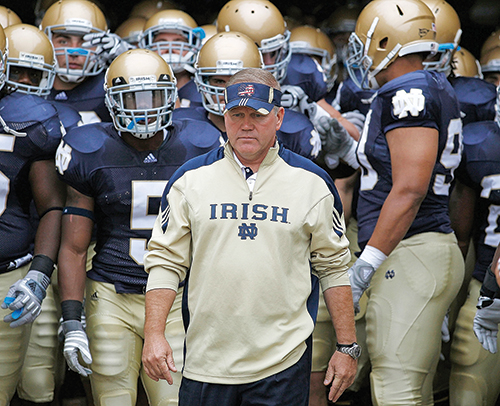The Pac-12 extends to the eastern slope of the Rocky Mountains. The Atlantic Coast Conference will soon stretch as far inland as Louisville. The Southeast Conference reaches northwest into Missouri. It’s the way of the world now in college sports—there’s a good chance your favorite conference is either about to get bigger or be consumed by a more ambitious one.
Basement Notes: NCAA conference realignment

The Pac-12 extends to the eastern slope of the Rocky Mountains. The Atlantic Coast Conference will soon stretch as far inland as Louisville. The Southeast Conference reaches northwest into Missouri. It’s the way of the world now in college sports—there’s a good chance your favorite conference is either about to get bigger or be consumed by a more
ambitious one.
No, these are certainly not the college conferences that your parents grew up on. But if you tune out the doomsday diatribes from the fingertips of fans online and the yapping heads on the sports networks, you soon realize that those conferences your parents came to know so well looked nothing like the ones your grandparents experienced. Look deeper into the history of universities and their athletic pastimes and it becomes clear that there is no true tradition when it comes to alliances between programs. And football has always driven realignment.
Back when trains were the primary mode of transportation for teams, conferences started forming as an easy means of guaranteeing an annual regional schedule. They were clustered within a few states, providing an economical outlet for schools to compete against one another.
As bowl games took on greater significance in the 1950s and ’60s, the convenience of proximity was trumped by the need to find comparable competition in order to impress pollsters and bowl selectors. Geography still played a major role in these alliances, but the advent of air travel reduced the need to accept inferior opposition.
The level of quality is always fluctuating in college sports, though, and sometimes even a new conference fails to provide adequate rivalries. So a team goes hunting again, hoping to find a spot in a better situation, and fans are forced to familiarize themselves with a new configuration the following season.
Take a school like Arizona State. At the time it was elevated to a full state university in 1958, the Sun Devils were playing in the Border Conference against the likes of West Texas State, Hardin-Simmons and other small schools. By 1962, Arizona State and their rivals the University of Arizona had banded together with the best of the Skyline Conference to form a new association—the Western Athletic Conference.
Within 15 years, both Arizona and Arizona State would leave behind the WAC, helping to turn the Pac-8 into the Pac-10, and the Sun Devils were transformed over the next two decades from a freshly minted university to a program with an annual shot at the Rose Bowl. Their tale is a little different than the rise and fall of schools like Fordham in the 1930s or the recent Bowl Championship Series Buster phenomenon, where schools like Utah and Texas Christian University have played their way into new, more prestigious affiliations, but the movement has always been in effect.
Even schools that have remained in one league for their entire athletic history have nevertheless been affected by changing alliances. The Big Ten, now 12 teams strong and growing, no longer provides a home to the Maroons of the University of Chicago. It has been even longer since Sewanee played its last contest as a charter member of the SEC.
The nature of affiliation itself has also changed dramatically. Twenty-five years ago, four of the top five teams in the college football polls were completely unaffiliated with any conference. Independence from conference affiliation once allowed a team to build a national brand for itself; now only Notre Dame clings to the custom. Far from being a boon for the schools, the inability of Idaho and New Mexico State University to find a new conference after the dissolution of the WAC this year was viewed as a death sentence.
These days, conferences rule the landscape. But now, instead of simply accounting for regional and competitive commonalities, conferences must take a program’s marketability into account as well, particularly regarding television contracts. As a result, the Pac-12 snatches up schools near Denver and Salt Lake City, the SEC seeks out a base in Texas and the Big Ten poaches along the Eastern seaboard.
So sit back and enjoy the action while you can, because the conferences that have been responsible for some of your fondest college-sports memories will look completely different to your progeny. Ultimately, the malleability of NCAA affiliation is the one tradition we can always depend on.



